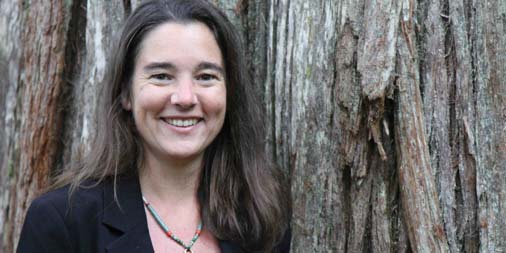
Features
Environment
Opinion
Addressing climate change
January 5, 2016 By Neva Murtha
 PrintAction columnist Neva Murtha works with Canada’s magazine publishers and printers to develop visionary procurement policies.
PrintAction columnist Neva Murtha works with Canada’s magazine publishers and printers to develop visionary procurement policies. Understanding how climate change can impact your small business and what you can do about it.
The biggest El Nino ever recorded is building strength, bringing projections of wild and unpredictable weather for the winter ahead.
This follows a year when Eastern Canada endured a brutal, seemingly endless winter, then forest fires ravaged the West this summer, leading to multiple millions of dollars in costs and losses. Texas emerged from four years of drought to torrential rains and flash flooding.
As the climate changes all around us and we wonder “what’s next?” World leaders, scientists, NGOs and concerned citizens gathered in Paris in late November for COP 21 – the Conference of the Parties on the global climate. Canopy is hopeful that these leaders will be as bold and unabashed as the weather around us in setting actions and taking concrete next steps.
Facing the issues
The issue of climate change is so incredible in scale and impact that most of us often feel it is completely beyond our control or influence. But we have more power than we might think. Especially when we work in industries that use trees and forest products as a foundation of business.
The choices you make on what to purchase, where it is sourced and how you assess the practices of those harvesting the forests can make a meaningful contribution to helping stabilize the climate – for now and for your children’s children.
As we all know, trees absorb carbon. As do the undisturbed soils that nurture intact forests ecosystems. The more scientists study the climate-regulating ability of forests, the more data confirms their critical role. Trees remove carbon from the atmosphere as they grow, storing it in leaves, woody tissue, roots and organic matter in soil. The older the tree, the more carbon it not only holds, but continues to absorb. Once an ancient tree is felled and the soil disturbed, a massive amount of carbon is released, adding to the global atmospheric burden at a time when we desperately need to keep new carbon out of the atmosphere.
Right here at home, more than 201 billion tonnes of carbon are stored in the trees, soils, water and peat of North America’s Boreal Forest – equivalent to 26 years of the world’s emissions from fossil fuel burning. Furthermore, naturally occurring ecosystem services provided by the Boreal, such as carbon storage and water filtration, are worth 2.5 times more than the value of extracting resources such as minerals and timber.
Releasing the carbon
The loss of the world’s forests releases about two billion tonnes of carbon per year. Tropical deforestation accounts for about 25 percent of anthropogenic emissions of carbon dioxide (CO2) and 12 percent of total greenhouse gases (GHG). This year’s forest and peat fires in Indonesia have been releasing more GHGs than the daily emissions of the U.S. economy and has Indonesia on track to be one of the largest GHG emitters of 2015.
Figures from the UN Food and Agriculture Organization (2010) show there are signs that deforestation numbers are decreasing in several countries, but nonetheless continue to grow at an alarmingly high rate in others.
Given the importance of intact forest landscapes in regulating our climate, it turns out there is much we can do at a local and national level, as businesses and citizens. Keeping high carbon forests intact is one of the most immediate and cost effective ways to keep our climate stable and species vibrant.
Of course we will continue to use forests – for fuel and food, paper and lumber. What matters is which forest products we choose. These choices will make a huge difference to both our businesses and society.
Find out where your paper comes from. Choose not to buy from threatened and endangered ancient forests that are high carbon value. Choose second growth or pre-1994 plantation, FSC-certified forests. Choose to support the development of lower carbon options like straw-based papers and recycled fibre papers. Lend your support to the community of business leaders who advocate for the protection of high conservation value forest ecosystems.
Then let your customers know you are taking steps to address these critical issues. Update the sustainability content on your Website. As Canopy has discovered over the past decade, transparency is a critical step for printing companies moving forward and will only become more important for securing your status with large clients. Canopy has now collaborated with more than 750 companies involved with the printing supply chain and, during our discussions to establish environmentally sound purchasing policies, their committees always express a desire – and ever more regularly an RFQ requirement – to source forest fibre from non-controversial sources. Our corporate partners prefer that their printed products be produced on recycled and FSC paper and, importantly, that their printer has a finger on the pulse of sustainability issues.
Given that up to 80 percent of a printers’ carbon footprint is attributable to the papers they use, Canopy recommends that companies require their printers and paper suppliers to report transparently on key indicators like pre- and post-consumer recycled content, use of non-wood and straw content in papers, virgin wood fibre from non-controversial forest regions, among others. Public reporting of sustainability efforts is the first indicator of corporate integrity.
For the best paper choices, see Canopy’s Ecopaper Database.
Read the new cutting edge Life Cycle Analysis from New Leaf Paper for more compelling reasons to choose recycled. Choose wisely – for the global climate, for your business and for our common future.
Neva Murtha works with Canada’s magazine publishers and printers to develop visionary procurement policies. She can be reached at neva@canopyplanet.org
Print this page